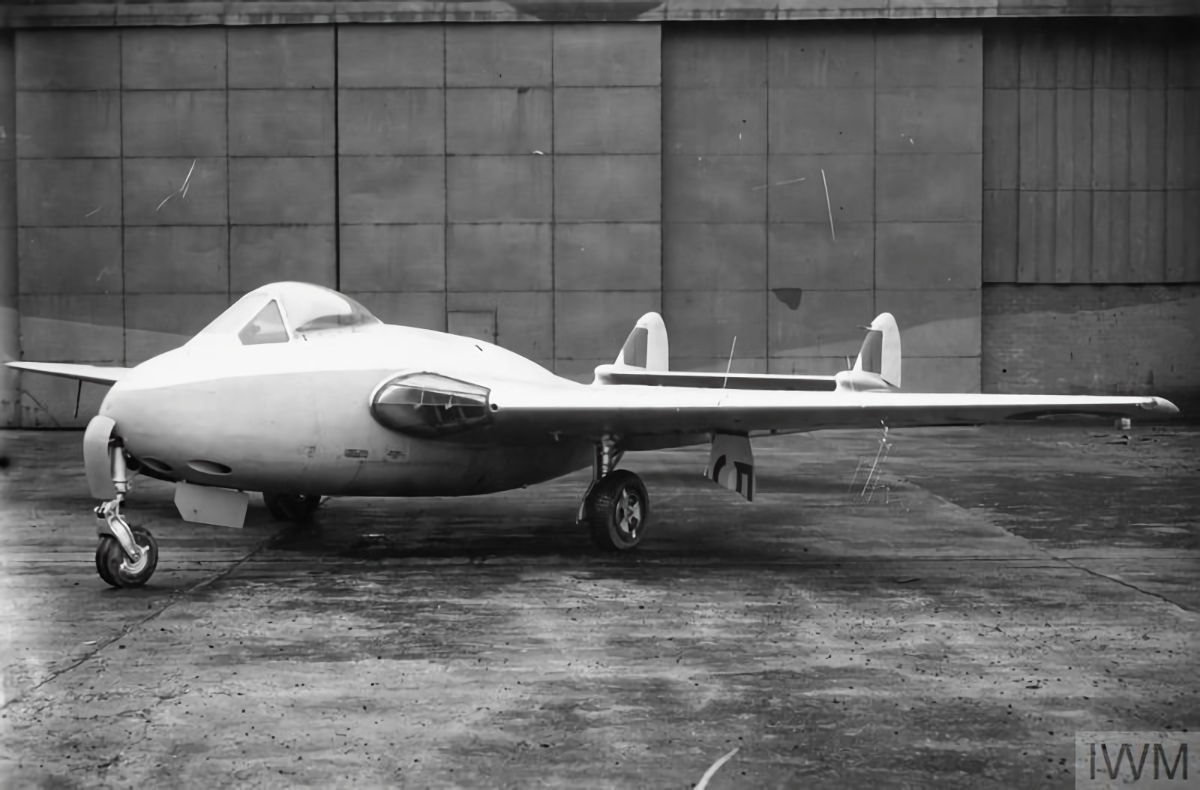de Havilland Sea Vampire
With the development of jet aircraft, the Royal Navy was keen to evaluate their suitability for operation from aircraft carriers. As a result, the third de Havilland Vampire prototype LZ551/G was modified with 40% extra flaps, long travel oleos and an arrestor hook to become prototype Sea Vampire F.10. This aircraft became the first jet to make a deck landing and take-off from an aircraft carrier (from HMS Ocean) on the 3rd December 1945. It was flown by Lt Cdr Eric “Winkle” Brown.
Despite the success of this trial, there were still many misgivings about the suitability of operating jet aircraft routinely from carriers, particularly concerning landing speed and operational range. As a possible solution an experimental flexible “rubber” deck was proposed, whereby jets would not require undercarriage. A reinforced fuselage and the removal of undercarriage allowed the aircraft to belly land on a rubber deck. This would extend range by allowing more fuel to be carried.
Six aircraft were converted from Vampire F.3s for the trial work as the Sea Vampire Mk 21. The prototypes were fitted with a strengthened fuselage for undercarriage-less trials on the rubberised deck. The trials were conducted at RAE Farnborough and then on HMS Warrior between 1949 and 1953. Despite the significant effort towards developing this idea it was found to be an unnecessary concept following the introduction of angled flight decks
The main Sea Vampire variant was the F.20, which although armed with four 20mm cannon was used mainly by training units for familiarization with jet aircraft. A total of 20 were built (including two prototypes).
The Sea Vampire T.22 of which 73 were built was similar to the land based T.11 but built for the Royal Navy. It was not navalised and was not fitted with an arrestor hook.
- HMS Illustrious
- HMS Ocean
- HMS Perseus
- HMS Theseus
- HMS Vengeance
- HMS Warrior
- Miscellaneous Sea Vampire Photos
- de Havilland Sea Vampires Operated by Australia
HMS Illustrious

HMS Ocean





HMS Perseus

HMS Theseus

HMS Vengeance
HMS Warrior




Miscellaneous Sea Vampire Photos
























